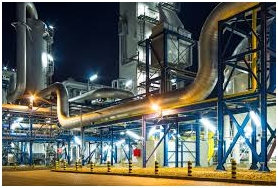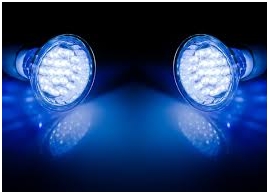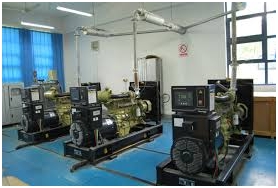Marvin M. sent us a nice article this week, so we tought we should share it with you. If you too want to be published on the blog, just send us a mail :) we’d be glad to discuss about it with you.
But for now, enjoy this article!
“I am sure nobody would want to grope around energized equipment, rotating shafts, variable drives, and power tools in the dark or dim light. Illumination is vital for all industries. The risk is injury and death. For this reason, it is important to install proper lighting systems in all sections.
Experts suggest that 75% of the lighting should be primary while the remaining for emergency lighting systems accounts for 25%. The following highlights the standards, emergencies lighting, monitoring, and control as well as recommended locations.”
Standard Lighting
Industries use the following lamps. Lamps, in this case, means equipment that produces light
- Incandescent lighting produces light when the included filament is energized. Used for general lighting, offices and living quarters
- Reflector lamps: similar to incandescent lights but with an included reflector. Applications include emergency lighting and general lighting
- Gas discharge lamps produce light through the excitation of a contained gas. Common types include fluorescent, metal halide and sodium vapor lamps and are used for general industry illumination, and pathway lighting. The metal halide lamps feature high color rendering suitable for assembly lines and inspection areas while sodium vapor lamps feature low rendering, thus are suited for lighting pathways and yards.
Most plants have an included step-down transformer to provide the right voltage for the lighting system from the grid. The separate transformer for lighting prevents frequent blackouts due to the voltage fluctuations associated with the primary transformer feeding the LV and MV equipment. The three-phase supply should have 4-pole switches or circuit breakers. This ensures that the neutral is always open when the panel is de-energized during maintenance.
From the panel, each sub-circuit should be a single-phase consumer circuit, with one wire from the single phase, and the aforementioned neutral from the panel. Alternately, install a single-phase two-winding transformer to ensure that the voltage matches for all the light fittings.
Other than the general illumination, the following are key lighting installations:
- Main white lights: installed to mark out the substation or industry and usually have a range of 15 miles in every direction of approach
- Subsidiary lights: installed to mark any vertical extremities and irregular building projections
- Secondary lights are placed next to the main white lights in case the latter fail
- Emergency lighting
Emergency Lighting
Emergencies in substations and plants are always significantly risky considering the equipment and voltages in the installation. Prompt evacuation from the premises is important. The event may result in primary power loss, so emergency lighting is crucial in such situations. The evacuation should not be a risk by itself due to poor lighting.
Provide readily available portable lamps and torches near exit doors, operational rooms, main plant areas, accommodation quarters, control room and OIM offices. The lamps should already be fully charged in case of emergency, with conveniently placed and functional charging units.
Additional Tips
- Install fluorescent lamps to illuminate rotating shafts to avoid the stroboscopic effect associated with other lights. This effect makes the shaft appear stationary when in reality rotating at high speeds, thus increasing chances of injury or death.
- Subdivide lighting schemes within distinct modules: this increases chances of having illumination when the system fails.
- During the lighting system design stage, ensure the farthest lamp receives a minimum of 95% of its nominal voltage. This entails proper cable sizing, and assumptions that all the fitting are energized during the design stage.
- Install light is fitting control in non-hazardous areas for easy accessibility.
- Use the lighting fittings that fit the designated area. For example, exterior illumination and areas where water sprays are used, such as modules that require water-based firefighting systems use all-weather lights and waterproof electrical fittings. Other non-hazardous lighting systems are okay for areas such as control rooms, computer rooms, accommodation areas and offices
- Maximize on the use of natural lights through using transparent roofing and openings
- Replace standard lamps with the more energy efficient variants in the market
- Layout modification for optimum illumination
- Interior color selection aids in illumination and energy savings
Navigation and Control
The best option for a substation is to install an automatic system to switch on the lights a quarter of an hour before sunset, and to sunrise and in times of reduced visibility, as well as a manual override system for unusual conditions, or during maintenance times. The accompanying user interface in the control rooms should indicate the real-time state of every light and fitting.
Addition systems in case automatic switchover to a secondary system in case the white lights control system fails, with a corresponding indication in the control room.
This is all you need to know about substations and plants’ lighting systems according to Marvin. Do you see anything to add?



how can we reduce energy consumption by incandescent lamp
no solution due to the comsumption of this lamp is more.
Can we use CFL in industry and can anyone suggest what will be waatage should be used in industry for clear visibility